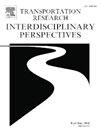Enhancing digital road networks for better transportation in developing countries
IF 3.9
Q2 TRANSPORTATION
Transportation Research Interdisciplinary Perspectives
Pub Date : 2024-09-01
DOI:10.1016/j.trip.2024.101217
引用次数: 0
Abstract
Data scarcity in developing countries often poses significant challenges to the use of analytics in addressing development issues. In transportation research, digitized road data is one of the most fundamental data structures, and a poorly digitized road network significantly reduces the ability to optimize trade of micro-enterprises (SDG 8) and placement of hospitals (SDG 3). Unfortunately, current methods to enhance or create digital road networks are not well-adapted to regions with sparse geospatial data, often resulting in poor digital representations of road networks in less-developed regions such as rural areas of developing countries. We present a novel projection-based incremental insertion method that is well-suited to either enhance large existing road networks or combine multiple sources of road networks in regions with sparse geospatial data. In collaboration with PemPem and the World Bank, we perform two case studies that demonstrate the effectiveness of the proposed method. Together with PemPem, we show that our method significantly improves the digital road network for smallholder farmers in Indonesia, where only 40% of the origin–destination pairs in our dataset were previously digitized. Moreover, in a case study of optimizing geospatial accessibility to healthcare in Timor-Leste (World Bank), the improved digital road network detects an additional 5% of people to be in the vicinity of a hospital.
加强数字公路网络,改善发展中国家的交通状况
发展中国家的数据匮乏往往给利用分析技术解决发展问题带来巨大挑战。在交通研究中,数字化道路数据是最基本的数据结构之一,数字化程度低的道路网络大大降低了优化微型企业贸易(可持续发展目标 8)和医院布局(可持续发展目标 3)的能力。遗憾的是,目前增强或创建数字化道路网络的方法并不适合地理空间数据稀少的地区,往往导致欠发达地区(如发展中国家的农村地区)道路网络的数字化表现不佳。我们提出了一种新颖的基于投影的增量插入法,这种方法非常适合增强现有的大型道路网络,或者在地理空间数据稀疏的地区将多种来源的道路网络结合起来。我们与 PemPem 和世界银行合作开展了两项案例研究,证明了所提方法的有效性。我们与 PemPem 合作表明,我们的方法极大地改善了印度尼西亚小农的数字道路网络,在我们的数据集中,只有 40% 的起点-终点对以前进行过数字化。此外,在优化东帝汶医疗保健地理空间可达性的案例研究中(世界银行),改进后的数字道路网络又检测到 5%的人在医院附近。
本文章由计算机程序翻译,如有差异,请以英文原文为准。
求助全文
约1分钟内获得全文
求助全文
来源期刊

Transportation Research Interdisciplinary Perspectives
Engineering-Automotive Engineering
CiteScore
12.90
自引率
0.00%
发文量
185
审稿时长
22 weeks
 求助内容:
求助内容: 应助结果提醒方式:
应助结果提醒方式:


